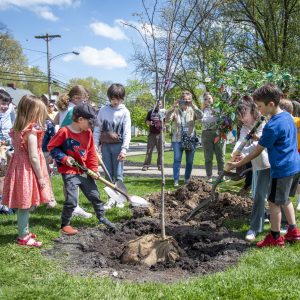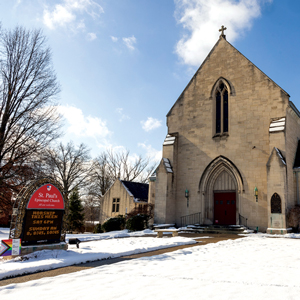Rooting for native plants

- Online pre-sales begin April 1 at lebonature.org.
- Plant pickup and a live sale will take place May 3, 10 a.m. to 1 p.m., Unitarian Universalist Church of the South Hills, 1240 Washington Road.
t. Lebanon Nature Conservancy encourages use of native plants in our yards and gardens because additional biodiversity makes our landscapes more resilient and provides food and shelter for pollinators and small animals.
Plants are most likely to live longer and produce abundant flowers and seeds if they are grown in the kind of soil they need – dry, medium or wet. A look at the root systems of some of the species selected for the conservancy’s 2025 sale shows how native plants are adapted to succeed in the range of soil types we have in Western Pennsylvania.
The plants shown below were dug up after a growing season (or two, as noted). You can see how different root structures feed the plants and work best in specific soil types.

 Note the very fine, hairlike secondary roots on the Pussytoes and Blue False Indigo. These filaments find their way between rocks or through tiny cracks in dry soil to extract even the smallest amounts of water.
Note the very fine, hairlike secondary roots on the Pussytoes and Blue False Indigo. These filaments find their way between rocks or through tiny cracks in dry soil to extract even the smallest amounts of water.
 The roots of Beardtongue, New York Aster and Purple Coneflower form dense masses or mats to collect enough water for these plants to thrive in the medium-moisture soils they prefer.
The roots of Beardtongue, New York Aster and Purple Coneflower form dense masses or mats to collect enough water for these plants to thrive in the medium-moisture soils they prefer.
 Note the thick roots that water-loving plants develop. Wild Geranium produces stolons (creeping plant stems); Great Blue Lobelia and Swamp Milkweed send out thick, stringy roots to draw in plenty of water from wetter soils.
Note the thick roots that water-loving plants develop. Wild Geranium produces stolons (creeping plant stems); Great Blue Lobelia and Swamp Milkweed send out thick, stringy roots to draw in plenty of water from wetter soils.
Mt. Lebanon Nature Conservancy’s 2025 Native Plant Sale
Online pre-sales begin April 1 at lebonature.org.
Plant pickup and a live sale will take place May 3, 10 a.m. to 1 p.m., Unitarian Universalist Church of the South Hills, 1240 Washington Road.





